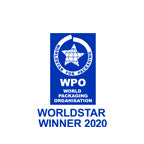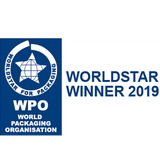BoxMart Managing Director Jo Offord recently spoke with Packaging News about the importance of a brand’s story and heritage in alcohol packaging. While some of Jo’s contributions can be read in May 2019 issue of Packaging News, we thought you might be interested to read all of what Jo had to say.
How crucial is the story of a brand to the final design and look?
The brand narrative is a key element of any packaging design. For all retail businesses, packaging is the first touchpoint with consumers and the chance to make a meaningful connection. By communicating a brand’s story through design, consumers are more likely to connect and interact with a product and therefore more likely to purchase. This can be achieved not just through the words and imagery used, but also the aesthetics of a pack. Brands can communicate so much about their unique stories, and the value of their products, through use of tactile elements such as special print finishes, materials and coatings. To further heighten consumer engagement, brands can make use of special openings or fittings, delivering a special, intriguing opening experience that truly invites customers into a brand’s world. The way in which a product is displayed or revealed speaks volumes and by harnessing the power of their unique story, brands can create a genuine, lasting connection with consumers.
Is this best reflected through graphics or can the structure of the packaging help to tell a story?
The best results are achieved when constructional design and graphics come together, working in harmony to help consumers understand what a brand stands for. More and more we are finding that clients approach us at the very beginning of their branding or re-branding journey as they recognise and want to capitalise on the huge power that great packaging can have. By working collaboratively with brands and combining innovative pack structure and graphics together, we can create something truly remarkable that captures widespread consumer attention and reflects a brand or product’s story.
Is the telling of a brand’s heritage particularly critical in the wine and spirits market? And if so, why?
The wine and spirits market is extremely competitive, so it’s important to draw on all unique qualities a product and brand have to stand out and intrigue consumers. Packaging provides a blank canvas upon which a company can tell its story. The more a brand’s provenance or narrative can be incorporated in to the design, the stronger and more consistent the overall messaging. This can be of particular use for start-ups and smaller companies, where communicating their unique brand and ethos to new and potential customers is vital for success. Established brands can use packaging as an opportunity to reposition themselves, perhaps as part of a re-brand or limited edition run, making the most of their long history and wealth of expertise. We have seen a significant trend towards all things artisan, with a shift away from what consumers can see as the ‘faceless’ nature of some mass-produced products. Today’s consumer is driven by connection, wanting to engage with a brand’s heritage rather than just the product itself. Telling the brand story gives consumers something real they can relate to, and by communicating heritage through packaging brands give their products the best possible chance of standing out on these saturated shelves.
What good examples are there of strong storytelling on a pack?
BoxMart recently created a gift box heavily focused on storytelling for award-winning Welsh craft brewery Tiny Rebel’s seventh birthday. The brand is known for its quirky nature and striking branding, so the pack needed to reflect this and deliver an impressive opening experience, as well as securely holding seven special edition 440ml cans of beer and a glass. The finished pack was a result of close collaboration with the brand, with the exterior featuring the brand’s imagery, printed in bright colours with a gloss finish to ensure the pack stood out. We turned the idea of a normal can multipack on its head and heightened the storytelling element by constructing a pack that opened out flat, with a black and white version of the graphics to the inside face, and tab closures for resealing. This allowed the pack to be shipper, ‘colouring sheet’ and collector’s item all in one. The unboxing experience was elevated and the brand story revealed. BoxMart also designed a gift box to deliver an elevated opening experience, reinforcing the premium positioning of craft gin brand, Thomas Dakin. The new box was designed to complement the branding of existing Thomas Dakin bottles, achieving both maximum on-shelf presence and an enhanced consumer experience with the clever use of a magnet for a smooth yet strong opening and closing experience. This reinforced premium, smart, clever positioning and lifted sales accordingly.
Does it help to engage with the various points of the supply chain right from the start? For example, do designers need to collaborate closely with manufacturers to provide a strong pack?
Absolutely! By taking a collaborative, holistic approach all the relevant elements can be factored in right at the start of the process to ensure the finished pack delivers across all necessary functions, from branding and design to product protection and shipping. When packaging designers and brands work closely together, materials, closures, print finishes and all other aspects of a pack can be taken into account early to ensure the very best combinations are used, both in terms of aesthetic performance and structural integrity. If that collaboration isn’t in place, it can be a bit like trying to construct the perfect cocktail with only a picture to work from and no detail about the ingredients, whereas when working closely together you have the full recipe.
Are there instances where there isn’t enough of a story for a brand? Is there a ‘plan b’ when/if this happens?
No matter the age of the product or brand, there’s always a story to be told. Telling a great story is not just about heritage, it can also be about the markets a brand is trying to tap into, the experiences those customers want, their aspirations and even where brands see their future or their goals. It’s all about story-telling, whether real or indeed imagined. For young brands and start-ups in particular, it’s important to be genuine and honest about the story so far, giving consumers the opportunity to authentically connect and feel part of the journey. When it comes to longer-standing brands, it’s important to look back over product and company history to ensure all aspects of heritage are being communicated in packaging design, particularly in today’s heavily craft-focussed market. By ensuring storytelling, whatever form that may take, features consistently throughout the packaging design, brands can elevate the consumer experience and differentiate themselves in the marketplace.
Should a brand’s heritage be the starting point for a pack design?
If heritage is part of the story and message a brand wishes to portray to their market then yes, it should be taken into account. Yet, if a brand is focussed on looking to the future or is a new breakthrough brand or product then heritage might be less important or relevant. What is clear, is that no matter what story a brand wants to tell, being clear on its narrative from the outset will help ensure all elements come together to deliver great packaging design that appeals to the market and performs well.





